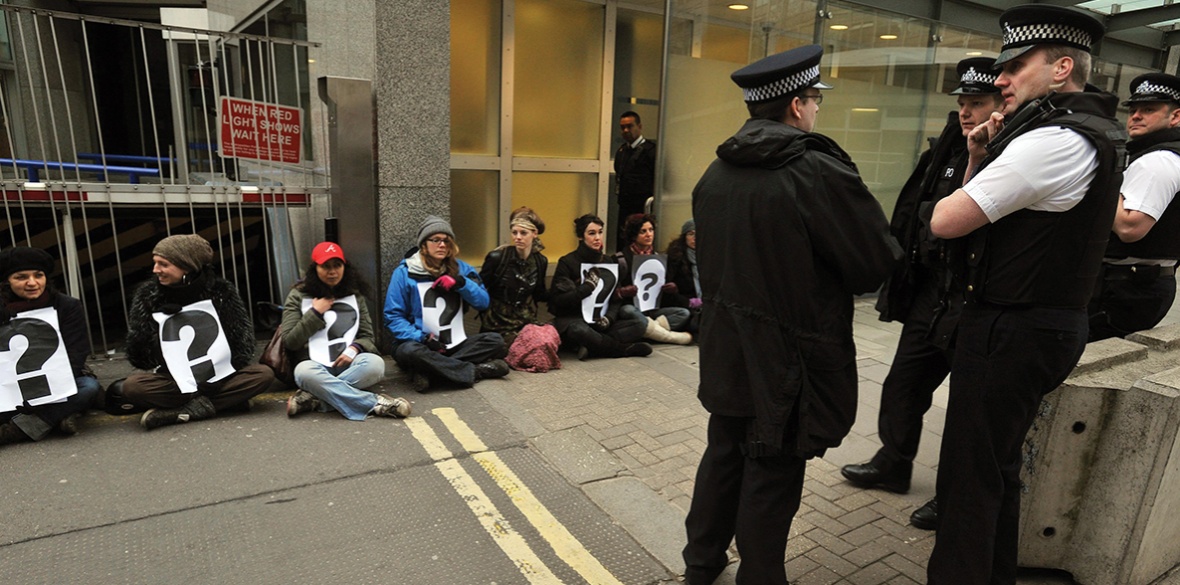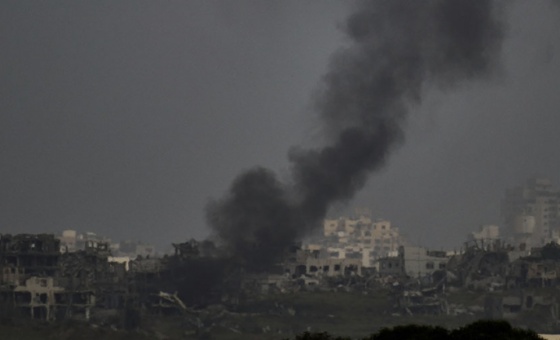This is the last article you can read this month
You can read more article this month
You can read more articles this month
Sorry your limit is up for this month
Reset on:
Please help support the Morning Star by subscribing here
THE public inquiry into undercover policing is back this week to shed more light on one of the force’s most coveted secrets.
Restarting after a five-month pause, the next stage of the inquiry, which is working chronologically through decades of undercover policing and serial abuses by officers, will now look at operations from 1973 to 1982.
But what have we learnt from the undercover policing inquiry so far, and do the campaigners, who fought for years to uncover the truth, feel satisfied with its progress? Before we move on to the second round of hearings, here’s a little recap.
What is the undercover policing inquiry?
The judge-led inquiry was launched in 2014 by Theresa May, following years of revelations exposing industrial-scale undercover policing of protest groups arching back decades.
After a six-year delay, the probe began hearing evidence in November 2020. The mammoth inquiry is investigating abuses carried out by two secret units: Scotland Yard’s Special Demonstration Squad (SDS) and the National Public Order Intelligence Unit (NPOIU), which together infiltrated more than 1,000 protest groups over 40 years.
In harrowing opening statements, the inquiry heard how spycops shattered the lives of their targets, forging intimate sexual relationships and even fathering children while undercover.
Spycops stole the identities of dead children to build fake legends, spied on families seeking justice for loved ones (including the family of murdered teenager Stephen Lawrence), and were responsible for numerous miscarriages of justice.
To investigate these horrific abuses, the inquiry, led by retired judge Sir John Mitting, will hear from more than 200 witnesses and scrutinise thousands of documents in its quest to “get to the truth” — or so campaigners hope.
‘An extension of MI5’
The first round of hearings, which took place over three weeks, set out to answer why and how the SDS was created, focusing on a snapshot of the unit’s 40-year history from 1968 to 1972.
Getting to the bottom of these questions, when most of those involved are now deceased, was never going to be an easy task.
But through the release of declassified documents as well as evidence from seven police witnesses — among them some of the SDS’s very first recruits — a number of key revelations emerged.
Perhaps the most astonishing was the admission that the secret unit worked hand in hand with MI5, something campaigners always suspected but had never been confirmed.
All SDS reports were shared directly with MI5, while their relationship was so close the secret service even considered financing the unit, the inquiry heard.
Police witness Joan Hillier told the inquiry she considered the SDS an “extension of MI5.”
The collaboration began when the SDS was first formed, with the two working together to infiltrate the anti-Vietnam war movement.
The inquiry heard how the police unit was set up with the support and funding of the Home Office in the wake of public disorder at a protest against the war in London in 1968.
Officers argued that infiltrating left-wing groups would help prevent a repeat of violence scenes at a protest planned later that year.
But while the demonstration came and went, the SDS continued to operate for another 40 years — only disbanding in 2008.
Pilot phase
The police witnesses — all now in their seventies and eighties — were keen to distance themselves from the abuses carried out by later generations of SDS officers. And it’s fair to say that some of the most damaging tactics did not seem to appear until later on in the unit’s history.
Early SDS officers did not seem to embark on years-long stints undercover, nor did they steal the identities of dead children.
Instead they created rudimentary fake profiles, with most even returning home to hang up their combat boots rather than assuming the life of an activist 24/7.
But while the early tactics of the SDS may have had a less devastating impact on the lives of their targets, campaigners say it was evident that the sexism, racism and contempt for campaigners was present from the very beginning.
This was seen by the spycops’ reports which were littered with discriminatory remarks (one describes a female campaigner as “well-busted”) while the first recruits exclusively targeted left-wing organisations and anti-racism groups.
Like their successors, the SDS’s early officers hoovered up all and any information, from their target’s holiday plans to the often mundane activities of campaigners like jumble and baking sales.
Their reporting was made in extensive detail and was often highly personal, recording the addresses, friends, families and perceived sexual orientation of anyone who came under their widely-cast net of surveillance.
‘Guardians on the edge of society’
All police witnesses, bar one, claimed that their roles in the SDS somehow protected democracy.
They fancied themselves as “guardians on the edge of society,” as one ex-cop told the inquiry, quietly protecting the status quo from radicals and revolutionaries.
But when asked whether the groups they’d been ordered to spy on posed a threat to the public, the resounding answer was no.
One officer, who infiltrated the Vietnam Solidarity Campaign, admitted that while a group might be “completely harmless” they would be “asked to find out what their objectives were.”
Other officers also admitted that they did not witness any evidence of crime or violence during their deployments.
For campaigners, the ex-cops’ testimonies strengthened their argument that they were subject to political policing.
Kate Wilson, an environmental campaigner who was deceived into a relationship with undercover officer Mark Kennedy, says it was “clear from the beginning” that the SDS chose its targets based on “political prejudice, sexism and racism within the police” rather than any involvement in criminality of violence.
“When you look at the bigger picture it was all political persecution of people for their beliefs,” she tells me.
“I think the very big problem with this entire unit is that it was based on the assumption that there’s something wrong with people protesting and campaigning for a better world,” Helen Steel, who was also tricked into a relationship with a spycop says.
“The very setting up of this unit is in conflict with fundamental human rights, including the right to protest.”
Were there relationships from the beginning?
The two are among at least 30 women known to have been duped into long-term intimate relationships with men who turned out to be police spies.
For the women, who have suffered lasting trauma from their experiences, understanding where the relationships (which they believe was a deliberate tactic used to gain trust), came from is particularly important.
“It’s important to be there to see how and when it develops,” says Steel, who has been searching for answers for 30 years ever since her ex-partner John disappeared, only to find out in 2011 he was a police spy.
While the police witnesses claimed they did not form personal relationships with activists, the inquiry heard how one officer Helen Crampton, who is now deceased, allegedly started a relationship with a prominent Vietnam Solidarity Campaign campaigner in the late ’60s.
If proven, this would mean SDS officers had sex with campaigners from the unit’s inception.
Women’s liberation infiltration
For Wilson, one of the most fascinating moments of the first phase was when “Sandra” a spycop who infiltrated a Maoist wing of the Women’s Liberation Movement, gave evidence.
SDS bosses chose a woman specifically to spy on the group, which campaigned for equal pay, childcare and decent maternity leave, for a period of two years.
“These are basic demands and the police were sending a woman to spy on them and she wasn’t even being paid as much as her male colleagues,” Wilson says.
“They were sending her in to set back the women’s movement while she herself was facing that kind of inequality.”
“Sandra” was the only elderly spycop to show doubts about her deployment, admitting: “I could have been doing much more worthwhile things with my time.”
‘Sampling the product’
Another shocking moment came when ex-cop “Peter Fredericks” took to the stand.
To gasps around the viewing room at the Amba Hotel, he likened undercover officers having sex with campaigners to police deployed in drug gangs “sampling the product.”
Steel says she can imagine this was the same attitude shared by her former partner and other officers, describing the comments as “grotesque.”
Police collusion in blacklisting
More was also unearthed on police collusion in the blacklisting of trade union activists.
One police witness let slip to the inquiry that a senior officer in Special Branch left the force to join the Economic League, a firm which shared records of left-wing trade unionists with employers to keep them out of work.
While serving in Special Branch, the senior officer led a unit which monitored trade union activities. He also trained officers who went on to serve in the SDS.
Whitewash fears
As a reporter covering the hearings, the inquiry itself proved to be almost as newsworthy as new evidence.
While the principle aim of the inquiry is to “get to the truth” about undercover policing, campaigners remain sceptical about whether it can, or indeed wants, to achieve this.
The probe, and especially its chair Sir John Mitting, seen by campaigners as an “Establishment figure” has been accused of prioritising and overindulging the police.
Anonymity orders granted to police spies to conceal their real names (and often cover names), as well as restricted access to the hearings has undermined the inquiry’s commitment to transparency, campaigners say.
During the first phase there was no livestream of the evidence online. Instead those wishing to witness the hearings had to sit in a viewing room in the Amba Hotel, in central London.
Those following remotely had to contend with a rolling transcript uploaded online with a 10-minute delay.
The chair’s conduct during the proceedings also came under fire. At one point he threatened to silence activists’ barrister Rajiv Menon in a remarkable clash that saw the retired judge literally bang his fist on the table.
His inability to master the mute function throughout the three weeks (“Sir, you’re on mute” became something of a catchphrase) also added to the at times farcical nature of the proceedings.
“I don’t have a lot of faith that it will get to the truth,” Steel says. “The inquiry will find some of the more extreme things to be a breach of human rights … but I think that the inquiry will largely be a complete whitewash.”
What next?
The next stage of the inquiry, starting today and ending on May 17 will be looking at the SDS’s operations between 1972 and 1982 — a longer period than the first so more witnesses will be giving evidence.
Celia Stubbs, who was spied on for 20 years for campaigning for justice for her partner Blair Peach, killed by police during an anti-racism demo in 1979, is among those due to give evidence.
The set-up for accessing hearings has been changed following complaints, meaning an audio recording of the evidence will now be available online — a big improvement on the headache-inducing rolling transcript.
For campaigners, the inquiry is a painful process that forces them to revisit past traumas.
But many are still hopeful that it will be worth it, as Wilson says: “We fought quite hard for the inquiry to happen and the information from it is very important for campaigning and democracy.”
Bethany Rielly is a reporter at the Morning Star. You can follow her ongoing coverage of the undercover policing inquiry here: morningstaronline.co.uk/tags/spycops.









